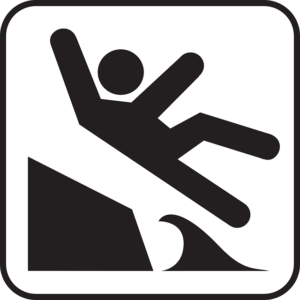You might not think about it too much, but did you know that the bathroom is actually the most dangerous place in most homes? It sounds crazy until you think about it a little, but here’s why the average bathroom is often where the most accidents happen:
- Tiles: The bathroom is usually tiled, and these tiles are slippery when wet and can cause serious injury if there’s a fall. There have been plenty of stories about a person slipping and hitting their head on a porcelain sink.
- Medication: Lots of people also tend to store their medicines in the bathroom. Sadly, the medication is not always in an out of the way place and kids may get into it and ingest what they shouldn’t.
- Cleaning products: Plenty of people also tend to store bleach, disinfectant, and other cleaning products in the bathroom. If these products are ingested by kids or even pets, they can cause serious harm.
Of course, bathroom safety really does apply equally to everyone. It’s not just children that are at risk in the average bathroom. The elderly and anyone can have an accident in the bathroom. This is why bathroom safety is just so important.

Enhancing Your Bathroom Safety
So, what can you do to prevent injury or worse in your bathroom? Here are some safety tips, guidelines, and practical things that can be done:
1. General Bathroom Safety Advice
The Home Safety Council has a lot to say about how to make your bathroom safer. They suggest that it’s important to do the following in all bathrooms to make them safer places:
- Always supervise children when they are bathing so that they can learn better bathroom safety and so that risky behavior is minimized
- Cleaners, disinfectants, bleach and other chemicals need to be stored safely in a place that’s ideally hard for children to get to
- Medications need to be stored in a similarly safe place, and possibly even in a lockable box
- Tiled and porcelain surfaces should always be kept dry and clean if possible to help minimize the risk of slips, trips, and falls
- Electrical appliances, such as shavers and hairdryers, should not be left plugged into the wall outlet when they are not in use
2. Privacy and the Elderly
The truth is that most of us want privacy when we use the bathroom. Unfortunately, as we get older and our health begins to deteriorate, we often find that we need more help in our own homes.
Many elderly people find that they also need help in the bathroom, but they may be too proud or fearful to speak up about it. It’s important to discuss if anyone at risk of an accident in the bathroom is comfortable and whether they need help or not.
In fact, there are a wide range of special accessories that are specifically designed for the bathroom so that elderly people, those with an injury, and the disabled can use it more safely, including:
- Grab bars: These can be strategically placed in any bathroom and come in a variety of sizes. They can be placed in showers, next to lavatories, around bathing areas, and anywhere else they are of use. These bars enable people who are at risk in that bathroom to hold onto them for extra support.
- Showering chairs: For people who may be at risk of falling when showering, there are special seats that can be installed permanently, and showering chairs that make it easier to bathe without falling or slipping.
3. Disposing of Drugs and Other Chemicals Safely
Did you know that minimal amounts of many drugs have been found in the environment and wildlife? This is because many people still flush their old tablets and drugs down the toilet. It is vital not to flush drugs down the toilet as they are hazardous to the environment, flora, and fauna.
Instead, you should always check with your local jurisdiction to find out where the local hazardous waste facility is. If you have chemical cleaners or any drugs that need to be disposed of, it can be done so at these facilities.
Conclusion
The average bathroom is a place where most accidents tend to happen in the home, but you can take control and follow local laws and guidelines, as well as seek advice on installing grab bars and other special accessories.
